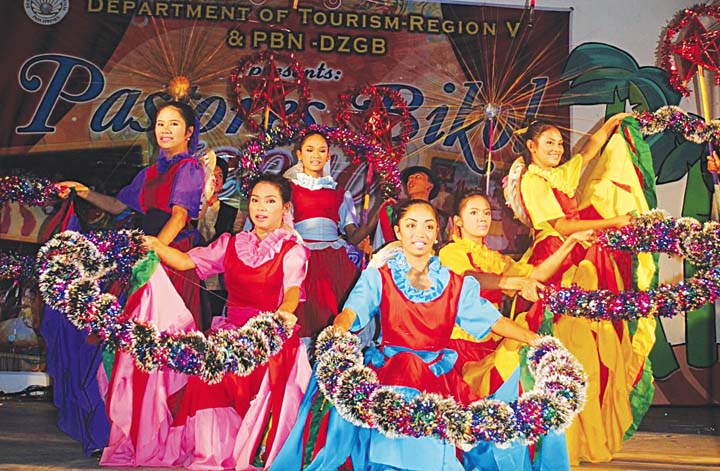Story and photos by Bernard L Supetran / Special to the BusinessMirror
WITH the onset of the Advent Season, signalling the start of Christmas in the Catholic Church’s liturgical calendar, local governments will be busy lighting up Christmas trees and Belen tableaus to observe the birth of the Christ Child.
In the Bicol region folks are doing more than the ceremonial lighting as they relive an age-old tradition depicting the first Christmas night.

While there were accounts the lyrics were written by national hero Dr. Jose Rizal, the most he could have done was edit them and come up with a rebooted version as Pastores was already widely practiced then.
Doña Metring Reniva of Oas town, one of the very first organizers of the Bicol Pastores, made some revisions to the hymn during the post-Spanish era.

Pastores a Belén, vamos con alegría
a ver a nuestro bien, al Hijo de Maria.
Allí, allí, nos espera Jesús.
Pastores entrad, entrad zagales también. Vamos a ver al recién nacido,
vamos a ver al Niño Emmanuel.
(Shepherds to Bethlehem We are going with happiness, to see, to our good, the Son of Mary. There, Jesus waits for us.
Shepherds enter, lads also. Let us go to see the newborn, Let us go to see the Boy, God with us)
The traditional dramatic representation of the shepherds’ adoration—singing and dancing from one house to another—is usually part of the ritual. The actors playing the shepherds are usually children or youth, wearing colorful costumes.

There are variations in the Bicol Pastores across the region because of diverse cultural influences, indigenous traditions and ethnolinguistic differences. In some versions, carols sung in the vernacular are integrated, thus providing a fusion of Spanish and Bicol motifs.
But somewhere along the way, the tradition lost its luster because of modern living and the lack of interest by the locals due to the intricacies in performing it.
In the 1970s Legazpi City-based radio station People’s Broadcasting Network revived a dying tradition by launching a contest among students and the youth. Its role was pivotal as it saturated the airwaves with the Christmas melody, and it became common to see dancers doing the Pastores serenade in households and business establishments.
The late National Artist for Dance Ramon Obusan, founder of the award-winning Ramon Obusan Folkloric Group and a native of Camarines Norte, created choreography for the song that is suited to the Bicolanos’ jovial nature.
Later on the Department of Tourism in Region 5, the Albay provincial government and the Legazpi City government joined efforts to preserve the tradition through the conduct of the Bicol Pastores annual musical competition.
Contingents from far-flung villages in Camarines Norte, Camarines Sur, Sorsogon, Catanduanes and Masbate troop to the Peñaranda Park in Legazpi City every year to vie for cash prizes and the honor of being adjudged the year’s best.
The tilt is usually synchronized with other events, such as Christmas-tree lighting and the Karangahan sa Pasko Green Christmas Festival of Albay under then Gov. Joey S. Salceda.
In 2012 a category for elementary students, called the “Bulilit Pastores” was included in the competition to teach the cultural value of the tradition among children.
This year’s edition will serve as the culminating event of a daylong festivity on December 12 by the Department of Tourism that will launch its Exciting Bicol and the Bring Home A Friend Part 2 tourism campaign.
But beyond the limelight, cheering crowd and enticing financial rewards, Bicol Pastores will be here to stay and never fade again as a testament of the Bicolanos’ musicality and their resilience in the face of life’s vicissitudes, just like the faith of the shepherds they portray.
Image credits: Bernard L Supetran



































